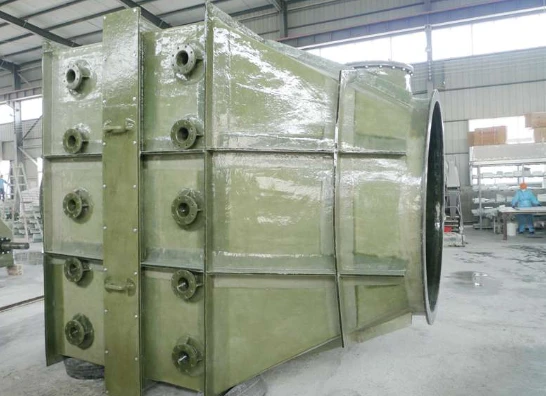
-
 Afrikaans
Afrikaans -
 Albanian
Albanian -
 Amharic
Amharic -
 Arabic
Arabic -
 Armenian
Armenian -
 Azerbaijani
Azerbaijani -
 Basque
Basque -
 Belarusian
Belarusian -
 Bengali
Bengali -
 Bosnian
Bosnian -
 Bulgarian
Bulgarian -
 Catalan
Catalan -
 Cebuano
Cebuano -
 China
China -
 China (Taiwan)
China (Taiwan) -
 Corsican
Corsican -
 Croatian
Croatian -
 Czech
Czech -
 Danish
Danish -
 Dutch
Dutch -
 English
English -
 Esperanto
Esperanto -
 Estonian
Estonian -
 Finnish
Finnish -
 French
French -
 Frisian
Frisian -
 Galician
Galician -
 Georgian
Georgian -
 German
German -
 Greek
Greek -
 Gujarati
Gujarati -
 Haitian Creole
Haitian Creole -
 hausa
hausa -
 hawaiian
hawaiian -
 Hebrew
Hebrew -
 Hindi
Hindi -
 Miao
Miao -
 Hungarian
Hungarian -
 Icelandic
Icelandic -
 igbo
igbo -
 Indonesian
Indonesian -
 irish
irish -
 Italian
Italian -
 Japanese
Japanese -
 Javanese
Javanese -
 Kannada
Kannada -
 kazakh
kazakh -
 Khmer
Khmer -
 Rwandese
Rwandese -
 Korean
Korean -
 Kurdish
Kurdish -
 Kyrgyz
Kyrgyz -
 Lao
Lao -
 Latin
Latin -
 Latvian
Latvian -
 Lithuanian
Lithuanian -
 Luxembourgish
Luxembourgish -
 Macedonian
Macedonian -
 Malgashi
Malgashi -
 Malay
Malay -
 Malayalam
Malayalam -
 Maltese
Maltese -
 Maori
Maori -
 Marathi
Marathi -
 Mongolian
Mongolian -
 Myanmar
Myanmar -
 Nepali
Nepali -
 Norwegian
Norwegian -
 Norwegian
Norwegian -
 Occitan
Occitan -
 Pashto
Pashto -
 Persian
Persian -
 Polish
Polish -
 Portuguese
Portuguese -
 Punjabi
Punjabi -
 Romanian
Romanian -
 Russian
Russian -
 Samoan
Samoan -
 Scottish Gaelic
Scottish Gaelic -
 Serbian
Serbian -
 Sesotho
Sesotho -
 Shona
Shona -
 Sindhi
Sindhi -
 Sinhala
Sinhala -
 Slovak
Slovak -
 Slovenian
Slovenian -
 Somali
Somali -
 Spanish
Spanish -
 Sundanese
Sundanese -
 Swahili
Swahili -
 Swedish
Swedish -
 Tagalog
Tagalog -
 Tajik
Tajik -
 Tamil
Tamil -
 Tatar
Tatar -
 Telugu
Telugu -
 Thai
Thai -
 Turkish
Turkish -
 Turkmen
Turkmen -
 Ukrainian
Ukrainian -
 Urdu
Urdu -
 Uighur
Uighur -
 Uzbek
Uzbek -
 Vietnamese
Vietnamese -
 Welsh
Welsh -
 Bantu
Bantu -
 Yiddish
Yiddish -
 Yoruba
Yoruba -
 Zulu
Zulu
Exploring the Benefits and Applications of FRP Tee in Modern Construction
Understanding FRP Tees A Comprehensive Guide
Fiber Reinforced Polymer (FRP) technology is revolutionizing various industries due to its unique properties such as high strength-to-weight ratio, corrosion resistance, and durability. One of the essential components in the FRP family is the FRP tee, a versatile product with various applications in construction, infrastructure, and manufacturing. In this article, we will explore what FRP tees are, their benefits, applications, and how they compare to traditional materials.
What are FRP Tees?
FRP tees are structural elements that combine the efficiency of a T-shaped configuration with the robust characteristics of fiber reinforced polymers. Made from a matrix of resin reinforced with fibers (such as glass or carbon), these tees are designed to support loads while providing resistance to environmental factors. The unique combination of materials allows for innovative designs that can meet specific structural and aesthetic requirements.
Benefits of FRP Tees
1. Lightweight One of the most significant advantages of FRP tees is their low weight compared to traditional materials like steel or concrete. This characteristic results in easier handling, reduced transportation costs, and lower installation expenses.
2. Corrosion Resistance Unlike metals that are susceptible to rust and corrosion under harsh environmental conditions, FRP tees are resistant to chemicals and moisture. This property makes them perfect for use in environments exposed to saltwater, acids, or other corrosive substances.
3. High Strength-to-Weight Ratio Despite being lightweight, FRP tees offer remarkable strength and stiffness. They can withstand significant loads, making them ideal for structural applications where weight constraints are crucial.
4. Durability and Longevity FRP materials have an extended lifespan, reducing the need for frequent replacements and repairs. This durability contributes to lower lifecycle costs and better long-term performance.
5. Design Flexibility FRP can be molded into various shapes and sizes, allowing for intricate designs that may not be feasible with other materials. This flexibility aids architects and engineers in creating unique structures without compromising on function.
frp tee

Applications of FRP Tees
FRP tees find applications across several industries
- Construction Used in bridges, walkways, and scaffolding, FRP tees offer a lightweight yet strong alternative to traditional materials.
- Marine Structures Their resistance to seawater ensures that FRP tees are often employed in docks, piers, and other marine infrastructure.
- Chemical Processing In environments where corrosive chemicals are prevalent, FRP tees serve as piping supports and structural reinforcements, extending the lifespan of equipment and infrastructures.
- Transportation They are utilized in railway and highway systems where their lightweight nature and durability contribute to overall performance and safety.
Comparison with Traditional Materials
When comparing FRP tees to traditional materials like steel and concrete, several distinctions emerge. Steel, while strong, is heavy and prone to corrosion, necessitating regular maintenance. Concrete is durable but often lacks the tensile strength needed for certain applications and can be susceptible to cracking under stress. In contrast, FRP tees bridge the gap by providing a lightweight yet strong option with enhanced corrosion resistance and longevity.
Conclusion
As industries continue to seek advanced materials to meet evolving challenges, FRP tees stand out as a compelling solution. Their lightweight nature, coupled with high strength and durability, positions them as a preferred choice in various applications ranging from construction to chemical processing. As technology advances, we can expect to see more innovative uses for FRP tees, contributing to safer and more efficient infrastructure worldwide. The future of material science is bright, with FRP at the forefront of sustainable and practical solutions in engineering and design.
Latest news
-
Exploring the Benefits of Top Hammer Drifter Rods for Enhanced Drilling PerformanceNewsJun.10,2025
-
High-Precision Fiberglass Winding Machine for GRP/FRP Pipe Production – Reliable & Efficient SolutionsNewsJun.10,2025
-
FRP Pipes & Fittings for Shipbuilding - Corrosion-Resistant & LightweightNewsJun.09,2025
-
Premium FRP Flooring Solutions Durable & Slip-ResistantNewsJun.09,2025
-
Premium Fiberglass Rectangular Tanks Durable & Lightweight SolutionNewsJun.09,2025
-
Tapered Drill String Design Guide Durable Performance & UsesNewsJun.09,2025









